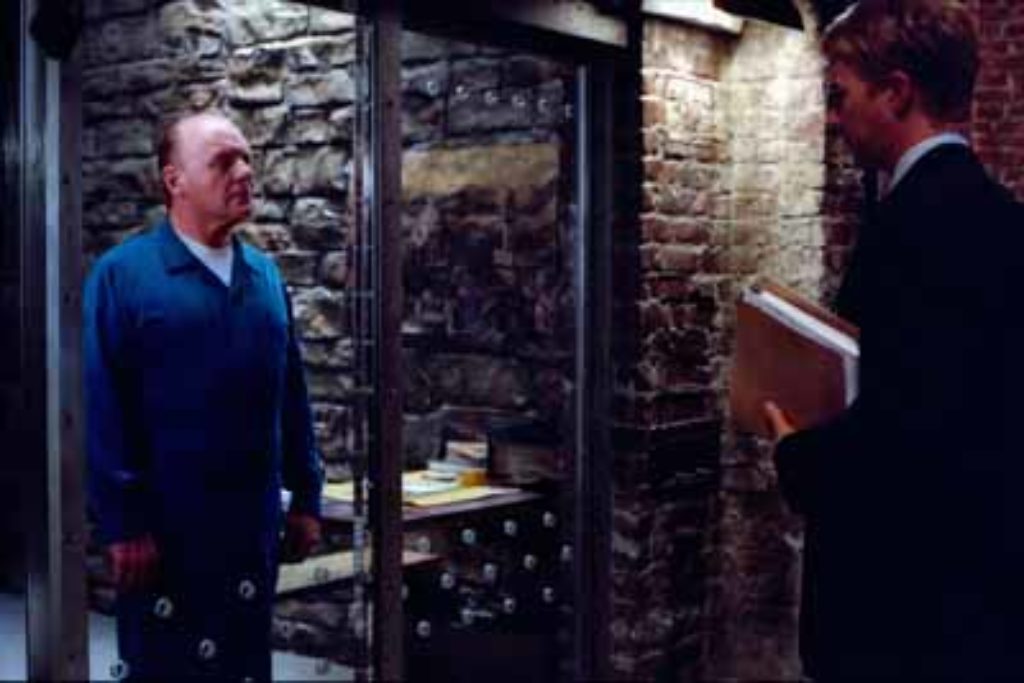
It’s tempting to open this review with, “He’s baaaack!” except in this movie, he hasn’t quite arrived yet. “He” being the cold, cunning, remorseless Hannibal “The Cannibal” Lecter, made famous in the movie The Silence of the Lambs. Red Dragon is actually the first story in the Thomas Harris trilogy about Lecter, and the movie opens with a prologue showing how the criminally insane serial killer was first captured.
FBI special agent Graham has a gift—or curse, depending on how you look at it—of being able to think like a serial killer. This is what helped him nail Lecter, although he was almost killed in the process. Called out of well-earned retirement by his former FBI boss, Jack Crawford, Agent Graham is asked to help track down another serial killer (Dolarhyde) who massacres families in their sleep and who has been dubbed The Tooth Fairy by the tabloids because of his penchant for biting his victims. This enrages him, as he considers himself the more menacing-sounding Red Dragon.
In the meantime, the unsuspecting Reba, who is blind, knows Dolarhyde only as a shy man with few friends, and the kindness she shows him and their growing friendship sparks an internal battle between the killer’s demonic Red Dragon persona and the smidgen of human kindness that remains in his warped personality.
Agent Graham needs help on this one, so who better to help him understand the mind of a killer than Lecter? Thus begins the grisly cat-and-mouse interplay between Graham, Lecter and The Tooth Fairy.
positive elements: Agent Graham adores his family; it is clear that he and his wife deeply love each other and their son. Graham, gun-shy after his near-death experience with Lecter, decides to pursue the new killer after seeing home movies of the families before they were slaughtered—all were apparently intact, loving homes—and seeing another close-knit family in a restaurant, who could easily be the killer’s next victims. The cruel abuse the serial killer suffered at the hands of his grandmother provides a negative lesson about parenting and loving discipline.
spiritual content: When asked what motivates a serial killer, Graham says, “Because it makes him feel like God. Would you give that up?” Lecter and Dolarhyde communicate through the personal ads in a trashy tabloid, using Bible verses as a sort of code. An alert FBI agent notes, however, that some of the verses don’t exist, implying he has a good knowledge of Scripture. Lecter curses God, calling Him a murderer for allowing natural disasters.
sexual content: Dolarhyde has a grotesque full-body tattoo of a red dragon on his back, and several scenes show full nudity from the rear and side. He is also seen running nude up a dark stairwell from the front, (the lighting mostly obscures the lower portion of his body). Dolarhyde seems obsessed with large-breasted women, and in a few scenes the camera lingers on cleavage. Reba initiates a sexual encounter with Dolarhyde (oral sex is implied). Her action is a shame, considering her friendship toward him until that time seemed pure and motivated by genuine kindness, not lust. A smarmy, sex-obsessed man is referred to by a rude joke. Drawings and old photographs contain images of nude men and women. A rape victim is briefly seen with her breasts exposed. Crude references are made to “wet dreams,” semen, erections, homosexuality and incest.
violent content: Simply put, this is a gory movie. Lecter stabs a man in the abdomen, whispering in his ear what his body is doing as he slowly dies. Lecter is in turn stabbed by a full quiver of arrows, then shot. Crime scene photos show blood-soaked mattresses and blood sprayed across a wall, as well as grisly close-ups of the victims. A murderer bites the nose off a victim. A man is super-glued to a wheel chair, set afire and rolled downhill. Several people are shot in the head. (Why does Hollywood always show people being shot square in the middle of the forehead?) Blood splatters across the face of a woman. A burning house explodes. A boy is threatened with a shard of shattered glass. A woman is hit over the head with club. Etcetera. Ad nauseam.
crude or profane language: Several uses of the f-word and s-word. The Lord’s name is abused more than a dozen times (including exclamations of “Jesus”). A cop shouts out a crude barnyard epithet and milder profanity tallies in at around 10.
drug and alcohol content: Reba and Dolarhyde drink beer. Lecter prefers wine. One man smokes a cigarette.
other negative elements: Lecter kills a symphony musician, and it is implied that his victim becomes the main course at a charity event. Lecter tells his dinner guests, “I love serving musicians.”
conclusion: Hannibal Lecter has morphed from killer to monster to parody. Star Anthony Hopkins admits that he had some reservations about doing this film for that reason. “But then I thought,” he says, “It’s not life or death. It’s only a movie, after all.” Still, to preserve something of his artistic sensibility, he insisted that he play Lecter “more dangerously, with lots more menace . . . with blazing anger and rage against everyone.”
Why is America so enthralled with this cannibalistic killer? “People respond to him. They find him seductive,” says screenwriter Ted Tally, who also adapted The Silence of the Lambs for the screen. “I think there’s a part of all of us that likes watching an anti-hero, someone who can get away with doing and saying things we could never get away with.”
In a perverse way, Tally tries to find humor in the sickest of depravity. We’re supposed to laugh knowingly when the symphony board eats one of its musicians, and indeed, many in the audience did laugh at the double entendre-laced commentary from Lecter.
Did the parents of the under-17 crowd that populated the showing I was at know what their kids were absorbing? Do you know what yours are?
